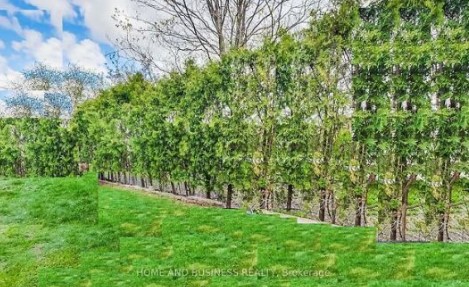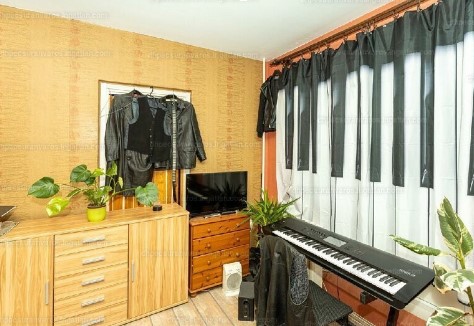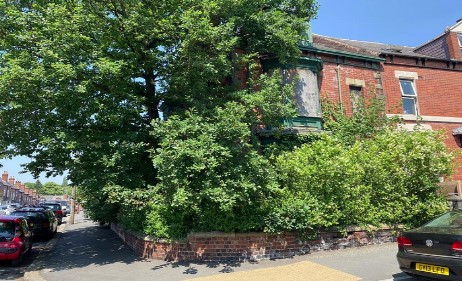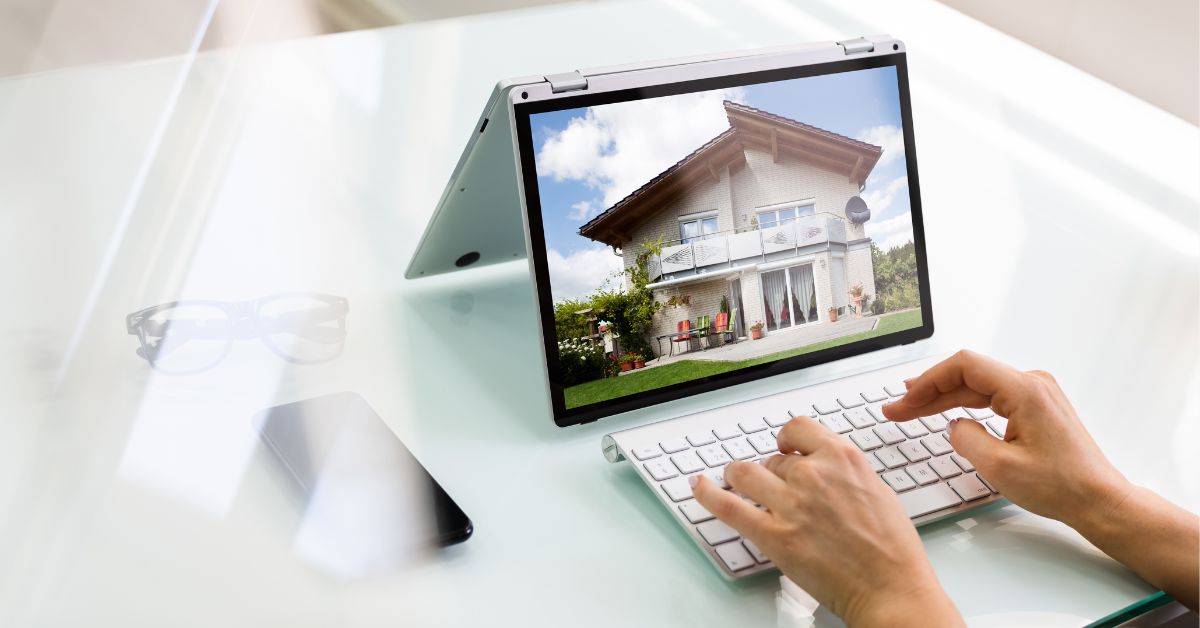In the visually driven world of the digital age, pictures can paint a thousand words, and this is never truer than in the real estate industry. Real state images aren’t just pictures; they’re powerful narratives, allowing potential buyers or investors to envision what their life might look like in a certain property. In the realm of real estate, all it takes is a single photograph to either ignite a buyer’s imagination or deter potential interest. With this in mind, real estate photography is not just about capturing structures in a visually honest way but rather about encapsulating dreams, aspirations, and the promise of a new beginning.
As real estate markets across the globe become increasingly competitive, the need for standout visuals has never been more relevant to agents. In a domain where potential buyers tend to make split-second decisions based on the information they find in online listings, the quality of real estate pictures can be the difference between a sale and a missed opportunity.
Long gone are the days when mere descriptions sufficed as information for buyers. Today, a property’s digital presentation serves as its first, most vital impression on a potential client. In essence, real estate photography has become an utterly indispensable asset.
From imposing imagery of high-rise penthouses kissed by the sunset to humble images of rustic homes nestled in nature, every property image can tell a story. And in an era where we all fall victim to the habit of endless scrolling, powered by increasingly diminishing attention spans, capturing and conveying an engaging narrative through compelling images is not just an art but also a strategic necessity. Whether you’re putting the spotlight on the grandeur of a historic mansion’s architecture or the cozy ambiance of a practical studio apartment, real estate photography should be leveraged to evoke emotions, inspire desire, and prompt action.
For agents, developers, and property sellers, understanding the significance of photography in real estate is more paramount than ever in the digital business landscape. It’s not merely about showcasing a property for the basics of what it has to offer; it’s about crafting a narrative that resonates, engages, and, ultimately, sells. We’ve put together this blog so you can feel more confident than ever in your pursuit of becoming a budding real estate photographer.
What is Real Estate Photography?
Real estate photography is exactly what it says on the label. It’s best described as a specialized branch of photography dedicated to capturing images of properties in their best light to assist in sales, leases, or showcases. Unlike candid photography or general landscape shots, which can both be treated more artfully and expressively, the focus of real estate photography is specifically on the structures, features, and essence of a property. Whether for residential homes, commercial buildings, or sprawling estates, real estate photography is used to present these spaces in the most flattering and appealing manner possible.
At its core, real estate photography is about more than simply taking pictures of houses or buildings. It’s about using photography to bring out a property’s individual character in a way that people can invest in. A good real estate photographer will emphasize a property’s unique features, creating a visual narrative that potential buyers or tenants can connect with personally. Doing the job effectively requires a keen understanding of some key pillars in the format overall, including lighting, perspective, and composition to portray spaces that feel authentic and aspirational.
For everything from personal real estate agent websites to online listing platforms, good real estate photography should be an ever-present part of every professional’s marketing plan.
Key attributes of effective, attractive real estate photography include:
Attention to Detail: Every nook, cranny, corner, and feature of the property needs to be highlighted in its best possible light. With the right attention to detail, photographers can ensure viewers grasp the entirety of what the property offers.
Technical Proficiency: This form of photography often requires a fair amount of specialized equipment, such as wide-angle lenses or drones. It’s important to get the best camera, the right add-ons, and some good post-processing software for real estate photography, understanding how to use it to produce high-quality, captivating images.
Understanding Space: Portraying effective visual representations of properties is more than just shooting rooms or facades willy-nilly. Comprehend how spaces flow together and present them cohesively to create the best possible image portfolio.
Emotional Resonance: The best real estate photos must tell a story. What do good stories have in common? They evoke feelings, and in the case of real estate photography, this means making potential buyers envision themselves in that space, experiencing moments and making memories.
In essence, real estate photography is all about finding a stable middle ground between a merger of the technicality of architectural photography and the allure of lifestyle imagery. The best images achieve a delicate balance of presenting the tangible, fact-focused aspects of a property while conveying the intangible feelings and experiences that living there could offer.
In the competitive realm of real estate, where first impressions are often the deciding factor that makes or breaks a deal, these photographs act as powerful tools in attracting interest, setting expectations, and driving actions.
The Role of Real Estate Photography
Real estate operates on a visual currency; real estate photography is the most common form that this currency comes in. Whether you’re showcasing the appeal of an intricate tile design or sharing the lush retreat of a sprawling backyard oasis, every detail matters when representing a property.
Potential buyers and renters are increasingly turning to online platforms to explore property listings, with a whopping 97% of all homebuyers using the Internet during their search process. With this in mind, the significance of high-quality photography has surged, being a vital aspect of professional plans in various ways across the industry.
Creating a Positive First Impression
In the age where digital consumption has become the norm, property listings have but mere seconds to capture the attention of scrolling viewers. A crisp, well-composed, and, crucially, attractive photograph can not only stop the scroll but also ignite interest. Real estate images are the online representation of the curb appeal that a physical home has, and the initial visual representation of a property online sets the tone for potential buyers’ perceptions. If the first image they see is lackluster or doesn’t convey the property’s value in an honest, effective way, a browser is likely to move on without giving the property a second thought. On the other hand, a stunning photograph can create a lasting impression from the first moment, prompting viewers to delve deeper into the listing or even being the catalyst that leads to a viewing being scheduled.
Showcasing Unique Features and Selling Points
Every property is unique, boasting features and elements that differentiate it from others on the market—consider this whenever you’re taking real estate photos. Well-crafted real estate photography is instrumental in highlighting these selling points in a clear, digestible manner. Whether you’re drawing attention to an artisanal fireplace, showcasing the features of a state-of-the-art kitchen, or making a statement with panoramic views from a balcony, professional photos ensure these features shine.
By capturing the unique selling points of every property in the best light and from the most flattering angles, real estate photography provides a visual tour throughout what could be their future home. When done correctly, real estate photography guides viewers through a property’s highlights and reinforces its value proposition.
Enhancing the Overall Marketing Strategy of Real Estate Agents
Beyond individual listings, the quality of real estate photography used plays a crucial role in shaping an agent’s or agency’s overall brand. High-quality images signal a degree of care, professionalism, attention to detail, and commitment to showcasing properties in their best light. Agents who invest in top-notch photography equipment or hire seasoned pros to take the photos often find it easier to attract new listings as sellers recognize the value of presenting their homes compellingly.
Moreover, stellar photographs can be leveraged across various marketing channels. From social media campaigns and email newsletters to print brochures and billboards, a good photo will shine in any of these formats! Good photos can bolster an agent’s reputation, showcase the quality of their portfolio, and serve as foundational assets in marketing campaigns. By driving meaningful engagement and genuine interest, they amplify the reach and impact of marketing efforts, leading to quicker sales and higher returns.
In conclusion, real estate photography transcends the visual format. It’s a necessary strategic tool for every agent’s business plan, acting as an effective brand enhancer and narrative builder. In a market where standing out from the competition is essential for success, good photography offers agents and sellers the visual leverage to portray their best selves, resonate with potential buyers, and close deals with conviction.
10 Tips for Impressive Real Estate Photography
Crafting visually appealing real estate photographs hinges on finding the perfect balance between the expressive nature of art and the meticulous accuracy of science. While the right equipment will make a significant difference—no one wants to see low-res photos taken from a camera phone—understanding the nuances of space, light, and composition is an equally crucial part of the equation.
We’ve put together ten essential tips to elevate your real estate photography game:
- Use a Wide-Angle Lens
A wide-angle lens allows you to capture more of the space in a single shot, helping to make rooms appear more spacious and inviting while allowing you to encompass more of a room’s features in one shot. This perspective is invaluable in real estate photography, giving viewers a more comprehensive view of the property in fewer photos. However, it’s important to note the importance of honest, accurate photos—don’t start using specialist lenses with the intention of misrepresenting a space!
- Master Natural Lighting
The best real estate photographs are often bathed in natural light, with this form of lighting also giving viewers the best possible idea of how a property will look daily. Schedule shoots during the “golden hours” of the day—early morning or late afternoon—for a sense of soft, flattering illumination. Interior shots should be completed with open blinds and curtains to let in as much light as possible.
- Use a Tripod for Stability
Stability is paramount in all forms of photography, let alone in the real estate industry. Using a tripod is a surefire way to guarantee your shots are sharp and free from the motion blur that can come with handheld shooting, especially in lower light conditions.
- Understand the Property’s Unique Features
Before starting the shoot, take a tour of the property to identify its standout features; these will be the stars of your photo shoot. Whether you’re taking aim at an ornate staircase or a custom-built fireplace, make sure these elements are prominently showcased in your photographs. They will be prominently featured in any descriptions, so the photography should be no different.
- Opt for Bracketing
To ensure you capture the perfect exposure with every shot, use bracketing. This is a simple, commonly used photography technique where multiple shots are taken at different exposure levels to cover as many bases as possible. These images can later be combined in post-processing software to create a perfectly lit photograph every time.
- Pay Attention to Composition
Adhere to the rule of thirds in every shot. This is the practice of ensuring that the main subjects of your photos are placed along imaginary lines, dividing the frame into nine equal parts. This technique is known across various industries for its capacity to result in more balanced and engaging images.
- Incorporate Real Estate Drone Photography
For properties with expansive grounds or stunning surroundings, such as historic mansions, larger commercial spaces, or even upscale apartment blocks, consider using a drone. Aerial shots can provide a unique perspective, showcasing the property’s layout, landscaping features, and relation to its environment. Drone photography and video footage present the agent as a professional at the cutting edge of photographic technology.
- Declutter and Stage Rooms
A cluttered space will always be distracting in real estate photography. Take time to tidy up every room in a property, with personal items stowed away out of shot. Consider staging rooms with simple, neutral decor to make them appear more welcoming and help potential buyers envision themselves in the space.
- Post-Process for Perfection
Even the best shots can benefit from some digital tweaking. Use photo editing software, such as Adobe Photoshop, to adjust exposure, correct color balance, and sharpen details. Tools such as HDR (High Dynamic Range) can balance shadows and highlights, ensuring good lighting across every part of the image. Again, this isn’t about misrepresenting a property; it’s about smoothing out the rough edges.
- Think Beyond the Property
While the primary focus is on the property, don’t forget to put some of the focus on its surroundings. Capture shots of the neighborhood, nearby parks, or local amenities, as these images provide context into the lifestyle that comes with the property—often a significant selling point for potential buyers.
Incorporating these tips into your real estate photography practice can significantly enhance the visual appeal of your listings, along with strengthening a brand identity overall. Remember, every property can tell a story; your task is to capture that narrative in its best light, making it easy for potential buyers to invest in at first sight.
Common Mistakes to Avoid in Real Estate Photography
In the competitive world of real estate, photos play a pivotal role in making a deal but can also kill a deal stone dead in no time at all. While high-quality, carefully crafted sets of images can captivate potential buyers, plenty of easily made mistakes can deter them.
Here are some common errors to be wary of:
Overediting and Misrepresenting the Property
It’s natural to want to present a property in the best possible light, but this should never come at the price of honesty and transparency. Remember, there’s a fine line between enhancing an image and misrepresenting reality, especially when using post-processing software. Overediting can lead to images that, while perhaps visually appealing, don’t depict the property for what it truly is. This could include overly saturating colors, adding elements that don’t exist, or airbrushing out significant imperfections.
Misrepresentation can lead to distrust from potential buyers, especially if they come to see the property in person. They are likely to feel deceived when the physical property doesn’t match up to its photographic portrayal, leading to lost sales or negative reviews of your agency.
Below, we’ve included an example of a photo that clearly used excessive editing to misrepresent the quality of a property’s outdoor space.

It seems there might have been something a little bit off about this hedge. Can you see where they went wrong? From Terrible Real Estate Agent Photos
Neglecting to Declutter and Clean the Space Before Shooting
While this might seem basic, it’s a frequently overlooked step. A cluttered or dirty space can immediately turn off potential buyers, getting in the way of the quality of the property’s actual potential. And it’s not just about giving the space a good dusting; it’s also about ensuring the space feels simple enough for potential clients to envision themselves in it. From stray personal items to visible dirt, details such as these can easily overshadow the property’s actual features. Always ensure each room is immaculately clean and staged with minimal, neutral decor to appeal to a broad audience.
Below is an example of a property photographer who clearly didn’t get the memo on clearing out personal belongings.

Too many clothes and a questionable piano-focused décor. From Terrible Real Estate Agent Photos
Failing to Capture the True Dimensions and Layout of the Property
Using photography accessories and tools such as ultra-wide lenses can distort a room’s size, making it appear much larger than it truly is. While it’s important to show as much of a room as possible, misrepresenting its size with trick photography can lead to disappointed and mistrustful potential buyers. It’s crucial to find a balance in lens choice and angles to provide a comprehensive yet honest portrayal of the space. Similarly, using photography with clear obstructions, such as plant life, people, or other unnecessary features, is an equal failure, missing the point of good real estate photography.

With this much focus on the tree, there’s no way to really see the property—what’s the point? From Terrible Real Estate Agent Photos
In real estate photography, authenticity and accuracy are key. While it’s tempting to make a property look picture-perfect by any means necessary, it’s vital to ensure photographs remain true to what the property genuinely offers. These photos should be useful for potential buyers, giving them information in a clear, easily absorbed visual style. By avoiding these common mistakes by using common sense, photographers can present properties in an appealing yet trustworthy manner, setting them up to facilitate successful real estate transactions.
How to Become a Real Estate Photographer
Real estate photography is a specialized field that requires a unique blend of technical prowess, something of an artistic eye, and, above all else, a keen understanding of the real estate market. Breaking into this niche can be rewarding for budding professional photographers, both artistically and financially, while it can also be a great skill to keep under one’s belt as a real estate agent.
We’ve put together a roadmap to help aspiring photographers embark on this career:
Developing Photography Skills
While an innate artistic sense is beneficial for all forms of visual expression, formal training can refine and elevate your photographic skills. Real estate photography isn’t about showcasing your abstract sensibility, after all. Consider enrolling in photography courses that focus on architectural or interior photography to get a feel for the format.
In these courses, you can learn the intricacies of lighting, composition, and post-processing, allowing you to produce high-quality real estate images consistently. It’s also wise to familiarize yourself with equipment specific to real estate photography, such as wide-angle lenses, drones, and tripods.
Building a Portfolio
Your portfolio is your visual resume and the first thing that potential collaborators will consider before taking on your services. Start building your portfolio by shooting properties of friends or family members, even taking photos of your own space, if necessary, to build an initial collection. As you gain experience in the field, select the best images that showcase a range of properties and lighting conditions, getting feedback from people whose opinions you trust along the way.
A diversified portfolio that encompasses a wide range of properties can demonstrate your versatility and adaptability—critical traits in the realm of real estate photography. Remember to update your portfolio regularly, ensuring you’re putting your best foot forward by discarding older images for newer, better shots as you grow and evolve in your craft.
Networking and Marketing
In real estate photography, along with every other aspect of the industry, who you know is often just as crucial as what you know. Show your face at local real estate events, join photography and real estate groups, and formally introduce yourself to real estate agents in your area, sharing your professional focus.
Having a digital presence is also vital in every facet of the industry. Create a professional, mobile-optimized website with easy navigational tools to showcase your portfolio, offer client testimonials, and provide contact details. Beyond setting up your own page, it’s also vital to engage in digital marketing, use social media and consider simple SEO practices to increase your visibility online.
Providing Exceptional Customer Service
While photographic skills are at the core of any successful photographer’s career, your interactions with clients can significantly influence your reputation and success. Always be punctual for shoots, listen carefully to client requirements, and be open to feedback at every stage.
Offering quick turnaround times, being actively responsive to communications, and addressing concerns in short windows of time will all be professional qualities that could set you apart. Building strong relationships across the industry with real estate agents and homeowners can lead to repeat business and referrals—the lifeblood of a thriving real estate photography venture.
In conclusion, becoming a successful real estate photographer is based on a blend of technical proficiency, marketing savviness, and interpersonal effectiveness. With a dedication to continuous learning and a commitment to excellence, aspiring sharpshooters can pave the way for a rewarding career in this dynamic field.
Conclusion
In the visually driven age where digital marketing takes precedence over all other forms, real estate photography has become more pivotal in the real estate industry than ever before. Real estate images are often the first impression potential buyers receive, acting as a gateway to a property’s potential. A well-composed photograph not only showcases the aesthetics of a space but also narrates a story, inviting viewers to envision how their own story might play out within those walls.
As this article has illuminated, real estate photography goes beyond merely pointing a camera and pressing a shutter. Proper photography requires a strategic blend of technical skills, an understanding of the property’s unique features, and an inherent ability to present it in an attractive yet genuine light. Whether you’re a budding photographer or a real estate professional, the tips and insights provided here can serve as invaluable tools on your journey.
Harness the power of impactful imagery, use our guidance, and watch as properties come alive, resonating with potential buyers and culminating in successful transactions.
For more insightful pieces about the real estate industry, visit our blog today.

